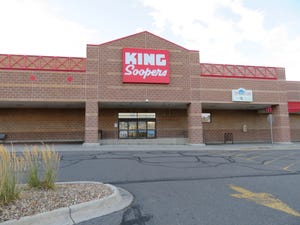By the Numbers: The ROI of SustainabilityBy the Numbers: The ROI of Sustainability
CALCULATING THE RETURN ON INVESTMENT for capital projects devoted to sustainability is opening a whole new area of potential savings for supermarket retailers. But it's complicated work. Determining ROI for sustainability projects requires you to focus on how much you may be able to lower utility costs, how much you can reduce maintenance costs, as well as how long it will take to break even on the
April 28, 2008
LIZ PARKS
CALCULATING THE RETURN ON INVESTMENT for capital projects devoted to sustainability is opening a whole new area of potential savings for supermarket retailers. But it's complicated work.
“Determining ROI for sustainability projects requires you to focus on how much you may be able to lower utility costs, how much you can reduce maintenance costs, as well as how long it will take to break even on the first cost of a capital investment,” said Derrick Ahler, vice president of store planning for Milwaukee-based Roundy's. The 153-store chain, operating under the Pick 'n Save, Copps, Rainbow and Metro Market banners in Wisconsin and Minnesota, has always had one individual responsible for both store planning/store design and store maintenance/energy management. Ahler is that person.
“When you tie those things to the same individual, you have a much better view of how your capital investment choices will impact the bottom line,” he said. “We see what the maintenance costs will be, what the utility costs will be and what the up-front purchased cost of equipment is. Now, knowing our full costs, we can look at a variety of options, sustainable initiatives vs. traditional initiatives, and we can start to understand what, at the end of three years, our savings and true ROI will be.”
At Schenectady, N.Y.-based Price Chopper, Bill Sweet, vice president of engineering and construction, noted that many green technologies that were considered innovative and expensive several years ago — such as recycled carpets; colored, sealed concrete floors; and precast concrete wall panels, among others — have now become more commonplace.
“Materials that might have had a premium price attached to them a few years ago no longer do, because from a cost control standpoint, these materials often make much more sense than traditional alternatives,” he said.
Using floors as an example, Sweet said traditional methods required the company to pour a slab, seal it, then apply an adhesive and place the vinyl tile on top. These installation costs are compounded by multiple stripping and waxing costs incurred during the year. Colored concrete only needs to be scrubbed.
“The floor cleans right up,” said Sweet. “So, from a maintenance standpoint, we are saving — depending on the store — between $1 and $1.50 a square foot, per store.”
The chain gets an ROI within five years, and it's all the better if it can get a payback in the first 25% of a lease's term, he added. When 50,000 square feet of floor space is multiplied by $1 a square foot, Price Chopper's annual savings per store for colored concrete floors averages about $50,000 a year. And, as Sweet noted, “we have 116 stores.”
Minneapolis-based Supervalu formed an Environmental Stewardship Council last year to make sure that the company is looking at and implementing sustainability initiatives across all its business units, according to spokeswoman Haley Meyer.
While declining to talk specifically about costs, offsets or ROIs, Meyer noted that one of the many things the council looks at is how proposed initiatives could drive efficiency. Last year, through its green initiatives, Supervalu spent $8.7 million in capital on energy projects that saved 74 million kilowatt-hours of energy — the equivalent to 67 metric tons of carbon dioxide emissions or the annual electric consumption of 6,945 homes, Meyer said.
Supervalu has implemented initiatives in several key areas. Neon signs use LED lighting, which consumes 20% less energy than traditional neon signs. Testing of the technology in the frozen food case showed that it can reduced electricity costs by 50% there. That means the average store saves the equivalent of the annual electrical consumption of six homes, according to Meyer.
Indeed, energy conservation is often the first program undertaken by retailers. For their size, stores can be one of the highest-volume users of power in any community. The emphasis on energy has led a growing number of operators to install energy management control systems that allow individual stores to control ventilation, air conditioning and freezer case temperatures from a laptop in a manager's office.
All new and remodeled stores at Giant Eagle, Pittsburgh, are being outfitted or upgraded with such system controls that track energy use in the stores. Through recommissioning, Giant Eagle reported a resulting energy savings averaging 12% per store.
Lakeland, Fla.-based Publix has also been a pioneer in energy conservation. Spokeswoman Maria Brous said management “believes it is worth the time, effort and money a corporation must invest to develop a sustainability plan and carry it out.”
Through its “Get Into a Green Routine” program, which began in 2001 with an emphasis on energy conservation and has since been extended to waste reduction, recycling and conservation of other resources such as water, Publix has saved close to 643 million kilowatt-hours through various lighting and refrigeration projects, according to Brous. The changes have helped reduce companywide electricity usage by 7% in existing stores and by an impressive 23% in new store designs.
Price Chopper has a system in place in all stores. “It indicates when compressors may be starting to fail, and when we are beginning to spend more on energy for that particular case — when it's not operating at 100% efficiency — than we should be spending,” said Sweet. “Then we can replace the compressor or the entire case if needed.”
Price Chopper is now upgrading all its energy management systems with new “state-of-the-art” software to bring the chain to the cutting edge of conservation technology.
“Now we can also regulate valves, do setbacks, adjust for different periods during the day and monitor the operation of the units much more efficiently,” said Sweet, noting that all of Price Chopper's sustainability initiatives are expected to save the chain 20% to 22% on its utility bills per year.
“We haven't had a full year's operation yet with a store that has all of these components, but our new stores soon will,” he said. Estimates, based on an average of 64,000 square feet and $8 per square foot for utilities, show that lowering the cost by $1 or even $1.50 will save between $100,000 and $150,000 annually per store.
Besides established management systems, there are also more obscure sustainability measures available. One that's growing in popularity is tax credits for equipment like solar panels or fuel cells that generate clean electric power.
“Then we can generate electricity, create heat, take that heat and push it back into the store,” said Sweet of Price Chopper, which is contemplating installing a system that will use natural gas at a store in Colony, N.Y.
According to United Technologies, the supplier of the fuel cell, the system can generate up to 70% of a store's electric energy.
“If you can save 70% of your fuel bill in every store every year, that's a big number,” said Sweet.
This past March, a new Whole Foods Market store in Glastonbury, Conn., became the first supermarket to generate most of its power on-site with an ultra-clean fuel cell.
Kathy Loftus, the Austin, Texas-based retailer's global leader of sustainable engineering, maintenance and energy, said that together with United Technologies and the Connecticut Clean Energy Fund, Whole Foods designed a combined cooling, heating and power system that will reduce the store's carbon footprint “dramatically.” The new 46,000-square-foot unit is expected to generate 50% of the electricity and heat and nearly 100% of the hot water needed to operate the store on-site using fuel cell technology.
“The harnessed exhaust energy at the store will cool refrigeration cases year-round and heat the store in the winter months,” Loftus said.
Even in instances where financial investment in sustainability initiatives cannot be subsidized, retailers say they may still make economic as well as environmental sense.
“Depending on the item, some sustainability investments have to be considered as a cost of doing business,” said Ahler, of Roundy's. “It pays off in that we are doing the right thing.”
Good Advice
Determine an ROI on sustainability initiatives by measuring the full cost of ownership.
Check for state or power company incentives that might offer tax rebates.
Make sure customers know! Publicize initiatives the company is taking.
Even with no new stores, retailers can implement systems during retrofits and store upgrades.
About the Author
You May Also Like




